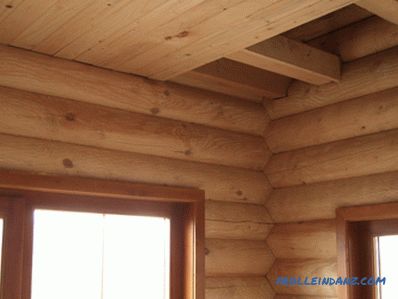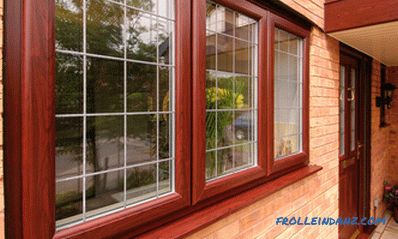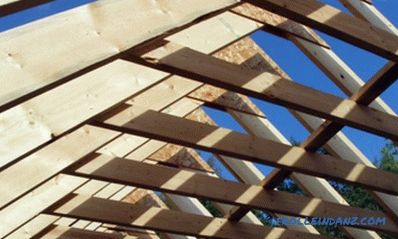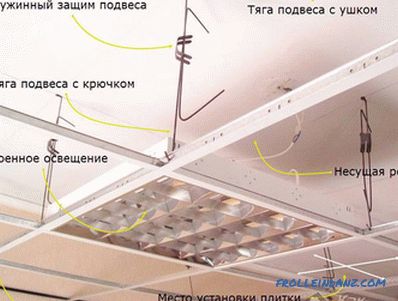It is known that a competent choice of foundation bases for future buildings involves a detailed analysis of the characteristics of the soil at the construction site. Based on the results of such studies, you can safely choose one or another type of foundation structure used to strengthen the foundation of the future structure. At the same time, both professional builders and ordinary developers often encounter soils that can change their characteristics over time and are referred to as subsiding in the circle of specialists.
In this regard, it is natural for our desire to understand what foundations are built on subsiding soils, as well as to acquaint you with well-known methods of hardening support bases. The name of the site with unstable soil layers speaks for itself, warning the user about the possibility of subsidence of the future structure. At the same time, the characteristic for such soils porosity plus high humidity lead to a noticeable reduction in soil volumes under the foundation foundation, which should be taken into account when calculating the loads on it. Thus, in addition to the possible precipitation of the soil due to the external load, its subsidence due to soil moistening should also be taken into account.
Types of subsiding soils
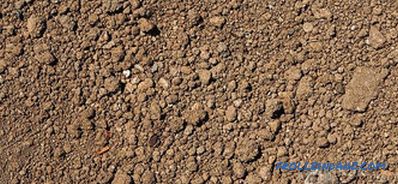 Sinking soil
Sinking soil
Depending on the causes of the subsidence phenomena, all known soils are divided into two types:
- plots with subsidence caused by external influences (while subsidence due to its own weight may not be taken into account);
- zones of subsidence phenomena caused by joint the effect of both factors (weight and humidity).
If there are any suspicions about possible problems with the ground at the place of work, you need to seek advice from geological prospecting specialists. Only they will be able to correctly assess the parameters of the subsidence of the subsiding soil (including its qualitative composition) and prepare all the necessary data on the choice of the type of foundation.
Choice of base
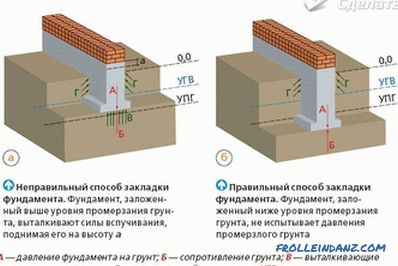 We take into account the level of freezing
We take into account the level of freezing
Foundation for subsiding soil is selected on the basis of data obtained from the analysis of the composition of the latter. Depending on the specific situation, it can be either pile or plate or traditional - tape. When making a final decision on the type of foundation, the following points should be taken into account:
- presence of strata of individual layers of soil;
- relative subsidence at a given load;
- depth of soil waters;
- indicators of soil freezing;
- design data on the size of the foundation;
- location of the bottom of the base.
After all the data have been prepared, it is possible to proceed to the construction of a table of pressures exerted by the soil over the entire thickness of the reservoir under study (up to the layer of groundwater occurrence). This table should also include data on pressures taken by part of the soil at full construction load (house plus foundation).
After summing up all the obtained data (for each layer of soil), you will be able to obtain the total value of the subsidence. The final conclusion on the basis type should be made taking into account the value obtained from the results of summation.
Solution options
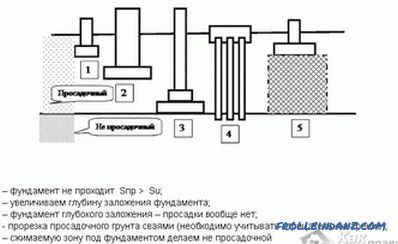 How to choose the foundation
How to choose the foundation
The following options are possible:
- In the case when the layer of unstable soil is relatively small - a solid layer beneath it can serve as a support for the foundation. In this situation, the use of pile or column support structures is considered the most acceptable. At the same time, the possibility of choosing other types of foundation bases (strip or slab) is not excluded.
- In some cases, it is possible to replace part of the subsiding soil with a material having higher compressive strength (sand, for example). The sandy layer can play the role of a kind of cushion for slab, columnar or ribbon support structures.
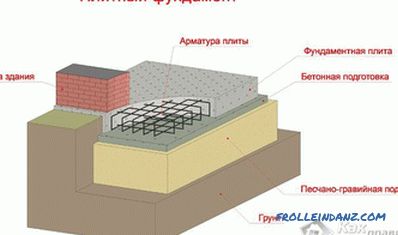 Arrangement of the cushion under the stove
Arrangement of the cushion under the stove
With full confidence in the results of the conducted research should not be ruled out the option of arranging the shallow foundation (with the replacement of part of the soil on the sand and with the expansion of the base structure of the structure).
Thus, an analysis of which foundations are erected on subsiding soils allowed us to make sure of the following:
- The soils we consider are the most difficult from the point of view of preparing a reliable foundation for future structures.
- Competent selection of the support base is possible only after consulting with a specialist or with neighbors in the area who already have experience in preparing foundations on similar soil.
A full soil survey is impossible without involving a representative of specialized companies in this process. This option will cost you more, but you will receive one hundred percent guarantee of the correctness of the choice made.
Video
Additionally, we suggest watching a video where you will receive advice on choosing a foundation for your home:
Also, a little about the benefits of screw piles:
